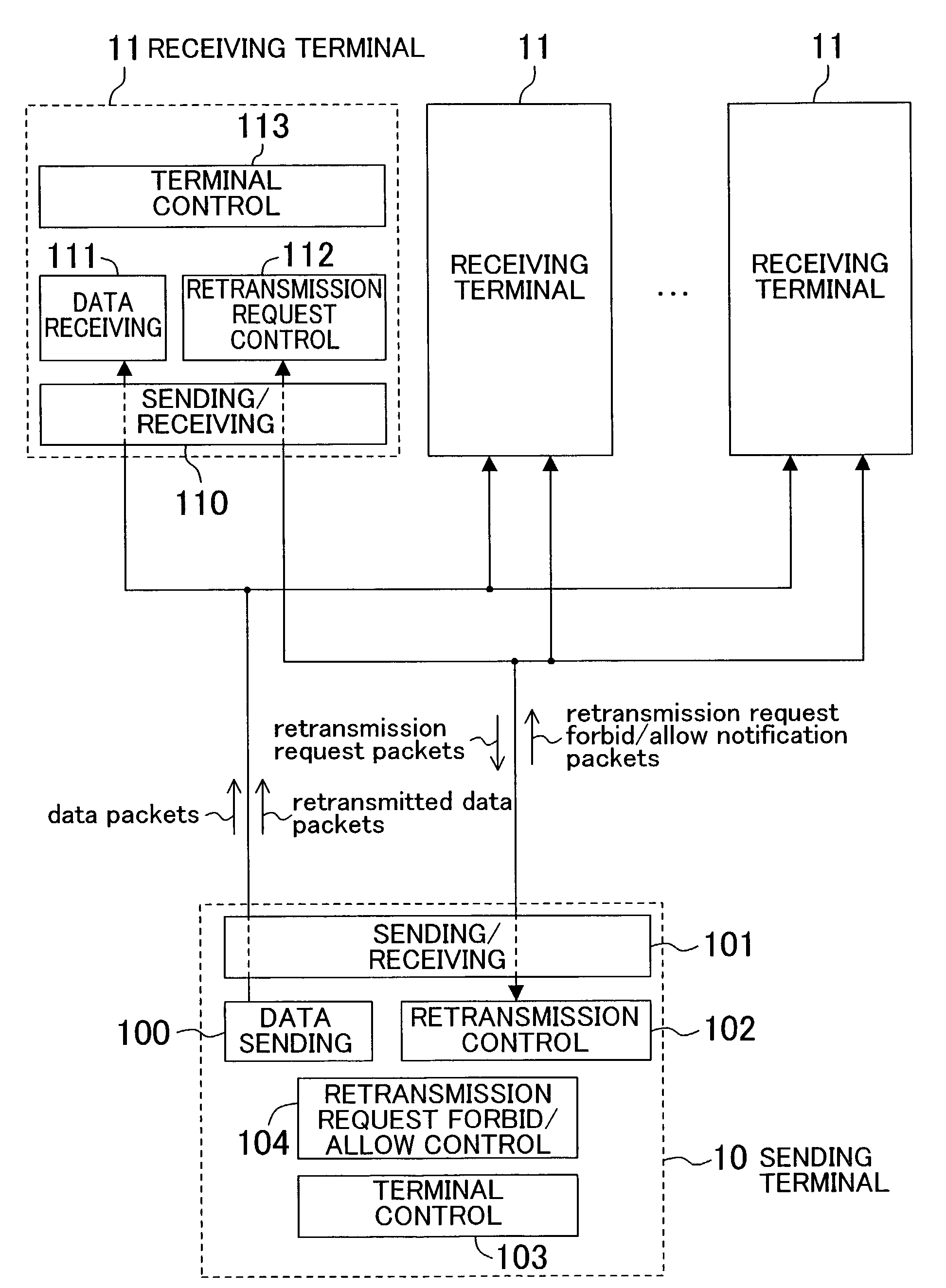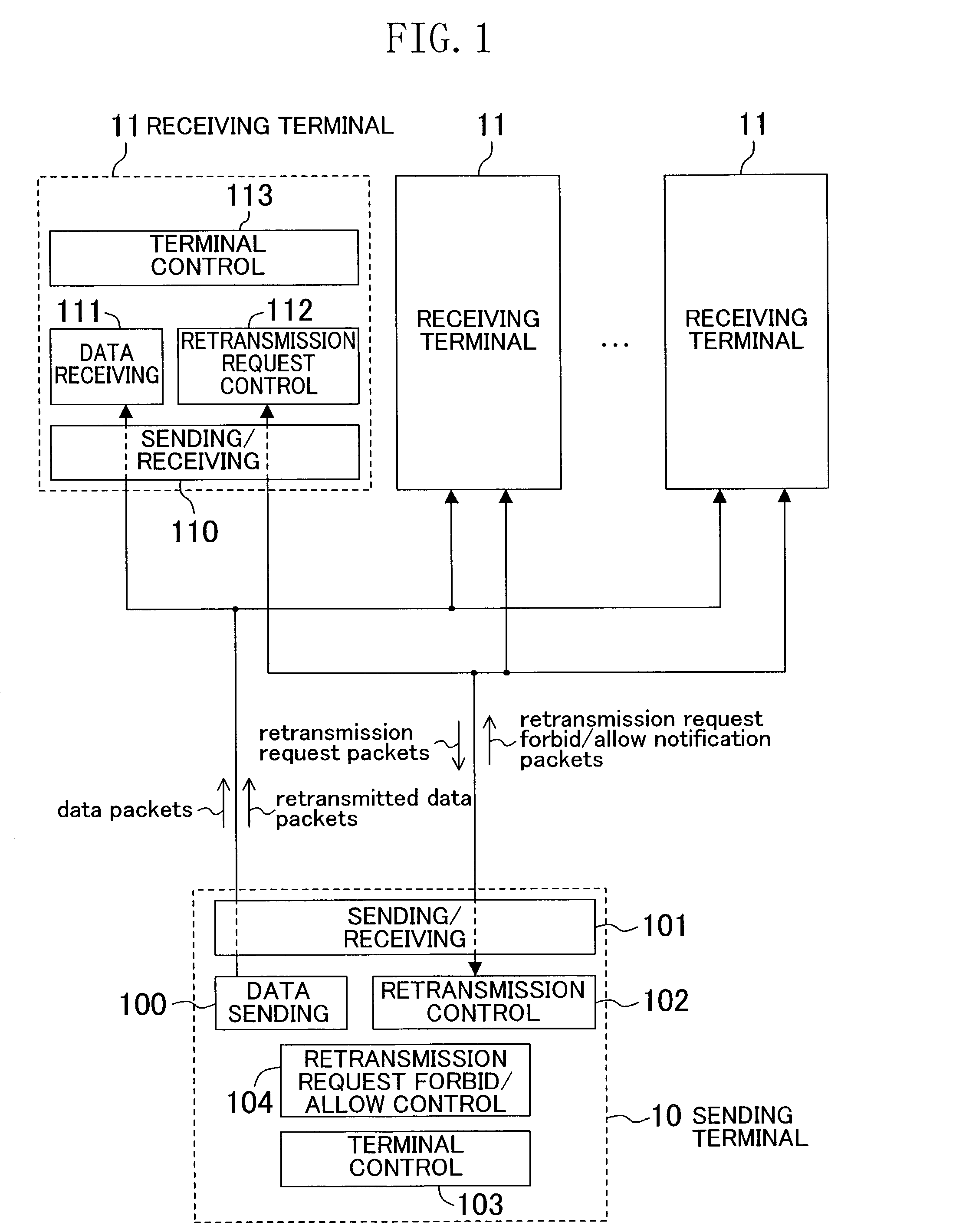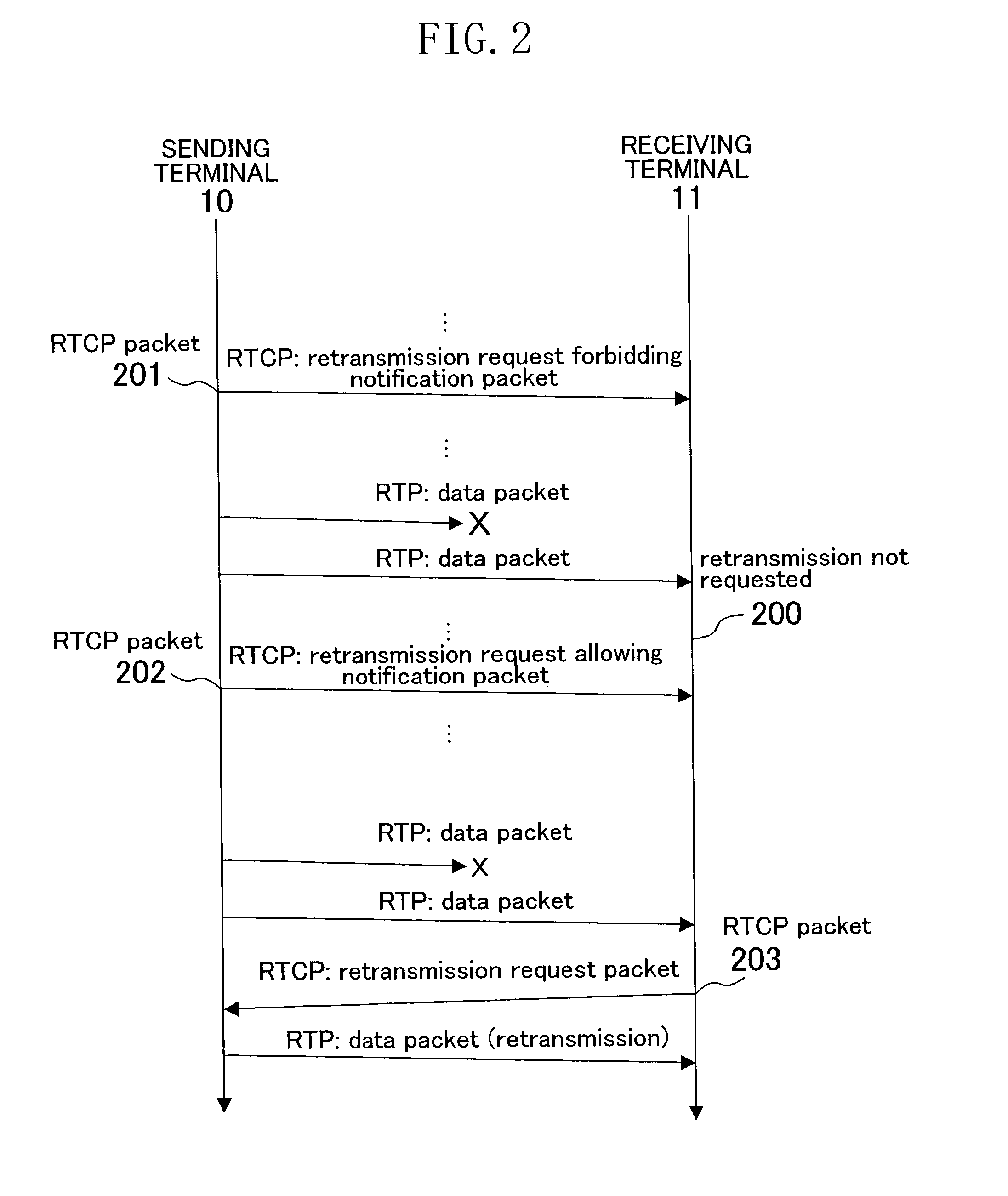Sending/receiving method, and device for the same
a technology of sending device and receiving method, applied in the field of sending and receiving data, can solve the problems of wasting bandwidth, affecting the sending of data packets by the sending device, and affecting the transmission quality of data packets, etc., and achieve the effect of stable transmission quality and stable transmission quality
- Summary
- Abstract
- Description
- Claims
- Application Information
AI Technical Summary
Benefits of technology
Problems solved by technology
Method used
Image
Examples
first embodiment
[0042]The present embodiment is primarily for solving the above first problem by individually forbidding or allowing the retransmission requests of a plurality of receiving terminals for retransmission from the sending terminal.
[0043]FIG. 1 is a schematic diagram illustrating an overall view of the present embodiment. In a sending terminal 10, a sending / receiving portion 101 is a means for receiving and sending packets, such as a modem or a LAN (Local Area Network). The communications environment is presumed to be an environment with packet loss generated by noise and congestion.
[0044]A data sending portion 100 is a means for taking in data from input, such as a video capture, a microphone, a file, or a shared memory, encoding the data if necessary, packetizing the data if necessary, and sending data packets to a receiving terminal 11 via the sending / receiving portion 101. It is also a means for retransmitting, upon a command from a retransmission control portion 102, the data packe...
second embodiment
[0058]The present embodiment is primarily for solving the aforementioned second problem by randomizing the retransmission requests of the receiving terminals.
[0059]FIG. 5 is a sequence diagram describing the sending / receiving method according to the present embodiment. In this example, RTP is used for the sending and receiving of data packets and RTCP is used for the sending and receiving of retransmission request packets, respectively. Observation of jumps in the sequence number of RTP packets serves as the method with which the receiving terminals 501 and 502 detect packet loss.
[0060]In FIG. 5, it is randomized whether the receiving terminals 501 and 502 send a retransmission request, and the result is that the receiving terminals 502 do not send a retransmission request packet even if packet loss occurs (503). A sending terminal 500 receiving the retransmission request packet from the receiving terminal 501 sends data packets to the receiving terminal 502 as well, even though it ...
third embodiment
[0061]The present embodiment is primarily for solving the aforementioned third and fourth problems by sending loss notification packets from the gateway.
[0062]FIG. 6 is a schematic drawing showing a overall view of the present embodiment. In FIG. 6, a sending terminal 60 is connected to a receiving terminal 61 via a gateway 62. The sending terminal 60 and the gateway 62 are connected to one another by a wired network, and the gateway 62 and the receiving terminal 61 are connected to one another by a wireless network. With this mode of connection, a case is conceivable in which the receiving terminal 61 is a mobile terminal, such as a portable telephone, connected to a server (sending terminal 60). This means, the server 60 and the gateway 62 are connected by a wired network such as an Ethernet or by ATM (Asynchronous Transfer Mode), and the receiving terminal 61 and the gateway 62 are connected by a wireless network such as a wireless LAN or by W-CDMA (Wideband Code Division Multipl...
PUM
 Login to View More
Login to View More Abstract
Description
Claims
Application Information
 Login to View More
Login to View More - R&D
- Intellectual Property
- Life Sciences
- Materials
- Tech Scout
- Unparalleled Data Quality
- Higher Quality Content
- 60% Fewer Hallucinations
Browse by: Latest US Patents, China's latest patents, Technical Efficacy Thesaurus, Application Domain, Technology Topic, Popular Technical Reports.
© 2025 PatSnap. All rights reserved.Legal|Privacy policy|Modern Slavery Act Transparency Statement|Sitemap|About US| Contact US: help@patsnap.com



